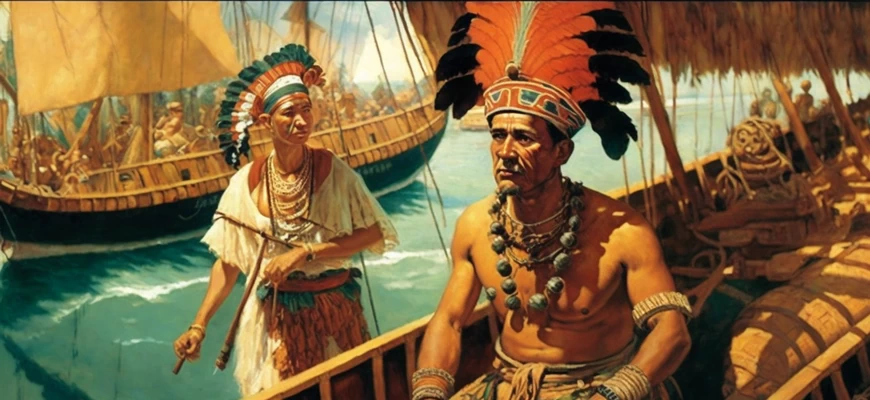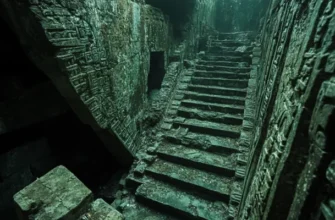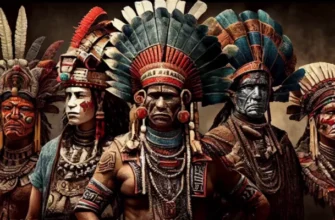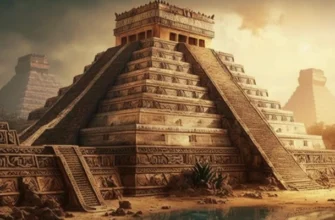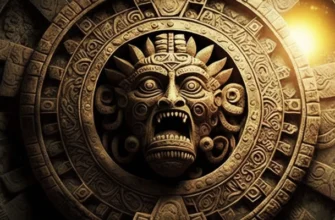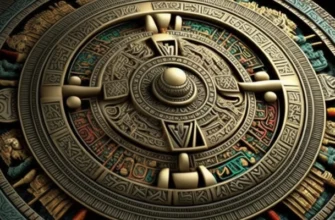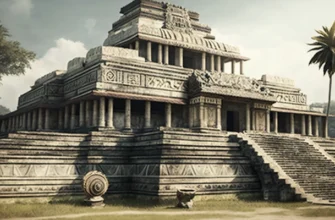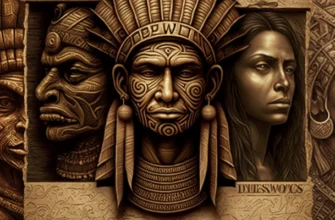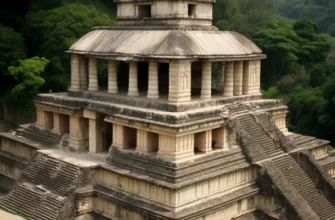Seafaring was an integral part of the Mayan culture. They were known for their great achievements in navigation and trade throughout the history of their civilization.
Mayan sailors were known for their technology for navigation, such as using the stars and birds to determine direction, as well as complex mathematical calculations to determine speed and distance to a destination. They also used different types of vessels, including boats and canoes, as well as larger vessels, to transport goods and people.
Mayan trade was important to the economy of this civilization, and seafaring allowed them to trade with other cultures and peoples. Mayan seafarers transported a variety of goods including jewelry, ceramics, textiles, and food.
Seafaring was also very important to Mayan culture and religion. They believed that the sea was the source of life, and sailing was associated with religious rites and cult practices.
Today, researchers continue to study Mayan navigation and its legacy, including the use of traditional technologies in modern navigation.
All of these facts demonstrate the significant role of navigation among the Maya and its impact on the culture, economy, and religion of this ancient civilization.
- History of the Maya and their navigation
- Mayan technologies for navigation
- Mayan navigation technologies
- Tools and equipment for Mayan navigation
- Mayan vessels and their functions
- Mayan trade and navigation
- Mayan trade and routes
- The role of navigation in the Maya economy
- The impact of navigation on Mayan culture and religion
- Seafaring and Mayan culture
- The influence of navigation on Mayan art
- Navigation and Mayan religion
- The use of traditional Mayan technologies in modern navigation
- Conclusion
History of the Maya and their navigation
The Maya were one of the most famous peoples of Mesoamerica, flourishing a thousand years ago, gathering a wealth of knowledge in mathematics, astronomy, writing, and architecture. The Maya lived in a region that encompasses the Yucatan Peninsula and parts of modern-day Mexico, Guatemala, Honduras, and Belize.
One of the most famous achievements of the Maya was their ability to navigate. The Maya were well-armed in naval warfare and trade. They had a wide network of ports that provided communication between different parts of their empire.
The Maya were known for their rich trade networks that covered much of Central and South America. They traded items such as stone oil, ceramics, silk, silk fabrics, leather, wood, and honey. The Maya used waterways to travel between ports and exchange goods.
The Maya are also known for their seafaring skills. They used the stars and astronomy to navigate the high seas and knew how to use the sun and winds to propel their vessels. The Maya were known for their kayaks and boats, which they used to hunt fish and marine mammals, as well as to move between different ports.
One of the most impressive achievements of the Maya in seafaring was their ability to cover long distances in their vessels. For example, the long distances between the port of Tikal in northwestern Guatemala and the port of Veracruz on the east coast of Mexico were crossed by the Maya on their ships.
In addition, the Maya used the sea routes to expand their culture and power into new territories. For example, they established trade networks and founded new settlements in the Caribbean and on the islands of Guatemala.
However, according to research, from 800 to 1000 AD, the Maya found it difficult to engage in navigation due to climate change and resource depletion. This may be due to the emergence of many factors, such as droughts, floods, and diseases, which led to the fall of the Mayan Empire in the 10th century AD.
In the modern world, Mayan navigation continues to be a great research and challenge for archaeologists and historians. Research on Mayan navigation helps to better understand their culture and interactions with other cultures that influenced their empire.
Mayan technologies for navigation
The Maya were quite famous sailors who were engaged in trade and made expeditions to other countries. They used a variety of technologies and tools for this purpose.
One of the key Mayan technologies was cartography and astronomy. The Maya developed fairly accurate maps that included the places they visited. To do this, they used stars and other astronomical objects to navigate and determine their place on earth.
The Maya also used canals and roads to transport goods. They built special lifting mechanisms to move goods over long distances.
Another important technology was boats, which the Maya used to navigate rivers and oceans. Their boats were capable of carrying large loads and were strong enough to withstand large waves.
Finally, the Maya developed a variety of tools and technologies for fishing and harvesting marine resources. They used special nets to catch fish and marine life, and they also collected shells and other marine products.
All of these technologies and tools helped the Maya engage in trade and expeditions that provided them with access to various resources and goods from other countries.
Mayan navigation technologies
The Maya used a variety of technologies for navigation, including cartography, astronomy, knowledge of currents and winds, and ordinary experience and knowledge of the landscape and seabed.
One of the key technologies for Mayan navigation was astronomy. They observed stars and other astronomical objects to determine their place on earth and direction of travel. The Maya understood which stars and planets were associated with different directions, as well as which were associated with different seasons. They also used astronomy to determine time and calendars.
In addition to astronomy, the Maya used cartography for navigation. They created fairly accurate maps that showed the landscape and the seabed. These maps helped the Maya find their way through the waters and avoid reefs and other obstacles.
In addition, the Maya used their knowledge of currents and winds to navigate. They understood which currents and winds helped them move forward and which ones made their journey more difficult. This knowledge helped the Maya determine the best path for their journey and allowed them to save fuel and other resources.
Tools and equipment for Mayan navigation
The Maya sailing tools and equipment were simple but very effective. The main tools used by the Maya for navigation included:
Boats and vessels: The Maya used different types of boats and vessels depending on their needs. For example, they used lightweight boats for short trips and larger vessels for long expeditions.
Compass belt: The Maya used a special compass belt to help them determine their direction of travel and navigate on the water. The compass belt consisted of threads and grains that were arranged in certain directions.
Maps and cartographic materials: The Maya used cartographic materials to determine their location and route of travel. Their maps showed rivers, lakes, mountains, coastlines, terrain, and other landmarks.
Stone scissors and ropes: The Maya used stone scissors and ropes to determine the depth of the sea and the location of reefs. They also used ropes to determine the speed of a ship.
Mushrooms: The Maya used mushrooms to keep track of time while navigating. They measured the time by using those passing a body of water on a ship.
Oars and air sails: The Maya used oars to propel their boats and vessels. For faster movement, they used air sails.
Mayan vessels and their functions
The Maya used different types of vessels depending on their needs. Here are some of them:
Canoes: These were lightweight boats that could carry two to four people. Canoes were used for short distances and fishing.
Boats: These were medium-sized vessels that could carry more people and cargo. Boats were used to travel between cities and for military operations.
Boats ranged in length from 6 to 30 meters: These vessels had different shapes and were used for different purposes, including trade, military operations, and expeditions.
Barques: These vessels were large and could carry large amounts of cargo. Barques were used for long sea voyages and for trade.
Ketch: These were large ships with two masts and air sails that could carry up to 200 tons of cargo. They were used for long sea voyages and for trade.
In addition, the Maya used oars to propel their vessels and air sails for faster movement. Mayan vessels had various functions, including trade, military operations, fishing, and expeditions.
Mayan trade and navigation
Trade was an important part of Mayan life, and they used seafaring to develop and expand their trade contacts. The Maya traded with other civilizations, such as the Toltecs and Aztecs, as well as with distant places such as Guatemala and the Caribbean.
The Maya used different types of vessels for trade, including canoes, dinghies, longboats, and ketch. They transported different types of goods such as jewelry, clothing, food, gold, and other valuables. The Maya also traded with those who lived near the sea, particularly the peoples of the Gulf of Mexico and the Caribbean.
The Maya had an extensive trade network that included cities on the coast and inland. They also gathered in caravans and went on long expeditions to trade with other peoples.
The Maya had a developed system of exchanging goods that was based on a system of exchange known as “value-equivalent”. This system means that goods were valued for their value, and values were exchanged for other goods. For example, gold could be exchanged for jewelry or rare fabrics.
The Maya also used trade intermediaries to exchange goods with other peoples. These intermediaries acted as international traders who maintained trade contacts with other peoples and resolved disputes that arose between sellers and buyers.
One of the most important commodities traded by the Maya was silk, which they obtained from the meili insects. Silk cloth was a very valuable commodity in Mesoamerica, and the Maya became one of the leading producers and exporters of this product.
The Maya also traded in paper, which they made from tree bark. It was a very important commodity for writing and communication in the Mesoamerican world.
All of these trade contacts between the Maya and other peoples contributed to the development of the Maya economy and culture. They gained access to new technologies and materials that allowed them to develop and advance in various areas of their lives.
Mayan trade and routes
The Maya were known for their advanced trade and networks of routes that ran through the entire Mesoamerican region. They used waterways along the coast as well as inter-river routes to transport goods from one place to another.
One of the key commodities traded by the Maya was salted and unsalted foods such as coffee, cocoa, fruits, and vegetables. The Maya also traded in pottery, stone, metals, various fabrics, and other goods.
The Maya used a network of routes that were broken down into major and minor roads that connected cities and settlements throughout the region. They also used trade centers along the routes to exchange goods and learn about new products and ideas.
The Maya route network included major trade centers such as Tikal, Calakmul, Palenque, and Copan. In addition, the Maya traded with other Mesoamerican cultures, such as the Toltecs and Teotihuacans.
Thanks to their developed trade and route networks, the Maya developed as a culture and enriched their cultural heritage. They also became part of a wider network of trade in central and southern Mesoamerica, which contributed to the development of the economy and the exchange of knowledge and ideas between different cultures.
The role of navigation in the Maya economy
Seafaring played an important role in the Mayan economy, as they lived in a territory that had access to the Caribbean Sea to the east and the Pacific Ocean to the west.
The Maya used waterways to trade with other cultures, especially those located on coastal areas. They transported goods in large boats, which provided them with access to new products and ideas.
The Maya also used navigation to hunt fish and other sea creatures, which was an important source of food for the coastal population. Since the Maya lived in a territory that had access to the sea, they learned ways to harvest seafood, which contributed to the development of their economy and diet.
One of the key commodities traded by the Maya was salt, which they harvested from salt lakes and reservoirs in northern Yucatan. The Maya also traded in stone, metals, various fabrics, and other goods that were mined in other areas and transported by waterways.
The impact of navigation on Mayan culture and religion
The Maya were an ancient people who lived in Mesoamerica, in the area of modern South and Central America. Mayan navigation was quite developed, their ships were used for trade, as well as for pilgrimages to holy places.
Mayan navigation had a great influence on their culture and religion. With the help of ships, the Maya traded with other peoples, which allowed them to gain access to new goods and ideas. Trade with other cultures allowed the Maya to develop and evolve in relation to their culture and religion.
The Maya believed in many deities, and their religion had a profound influence on all areas of life. There is much evidence that the Maya made pilgrimages to holy sites on their ships. Such pilgrimages allowed the Maya to keep in touch with their gods and show their devotion to their religious views.
In addition, Mayan navigation gave them the opportunity to explore new territories and expand their knowledge of the world. Their ships allowed the Maya to choose new places to establish settlements, which contributed to the development of their culture and influenced their architecture, art, and other areas of life.
So, we can say that Mayan navigation was very important for their culture and religion. It allowed the Maya to develop as a nation and expand their influence in the region. Through navigation, the Maya gained access to new resources, goods, and ideas, allowing them to enrich their culture and religion.
Navigation also gave the Maya the opportunity to explore and interact with different cultures. They learned from other peoples and took new ideas from them, which they then implemented in their lives. This allowed them to develop their culture and religion more rapidly than if they had remained isolated from other cultural influences.
Seafaring and Mayan culture
The Maya were famous for their achievements in astronomy, mathematics, architecture, and other fields of science and technology. However, some researchers believe that the Maya were also capable of seafaring and had a great seafaring culture.
There is some evidence that the Maya were engaged in seafaring. For example, images of people traveling on boats have been found in the walls of some Mayan temples, as well as images of animals living in the water. In addition, some Mayan cities were located near the sea or rivers that connected them to the sea, which indicates the possibility of maritime trade.
However, there are also opinions that the Maya were not as advanced in navigation as, for example, other peoples of the time, such as the Phoenicians. The lack of variation in the style of Mayan boats suggests that they may have been made, as a rule, for river transportation, not for the open sea.
Thus, although the Maya may have had little experience in seafaring, their seafaring culture cannot be compared to the cultures of other peoples who were engaged in seafaring at the same time. However, this does not diminish the Maya’s achievements in other fields of science and technology.
The influence of navigation on Mayan art
Seafaring had a great influence on Mayan art, as they were masters at building ships and navigating the water. The Maya used water transportation for trade and contact with other cultures, which led to the exchange of ideas, technologies, and artistic influences.
For example, the Maya practiced the processing of a variety of materials such as stone, bone, metal, and wood to create objects that were used for both domestic needs and religious and ceremonial purposes. The Maya also practiced painting and sculpture, which became part of religious ceremonies.
The Maya used waterways to trade with other cultures, such as the Toltecs and Aztecs. This exchange between cultures allowed the Maya to see and learn from other forms of art and architecture, leading to mutual influence and a mixing of styles.
For example, Mayan architectural elements such as step pyramids reflected their belief in a cosmic order, while Toltec architectural elements such as stone and clay figures were more realistic and detailed.
Thus, Maya voyages played an important role in shaping their art and culture, enriching their knowledge and providing opportunities for cultural exchange.
Navigation and Mayan religion
The Mayan religion is strongly connected with navigation, as they believed in a large number of sea gods who had powers over water and were able to influence weather conditions and the success of navigation.
The Maya believed in their gods of the seas and divine forces that controlled the elements of the sea and ensured the safety of navigation. They used a variety of religious rituals and sacrifices to obtain the blessings of the gods for their maritime expeditions and to ensure the success of their trading campaigns.
For example, during important events, such as the departure of a fleet, the Maya would hold religious ceremonies to appeal to the gods for support and protection. They also believed that the deceased souls of sailors became part of the gods of the seas and could help during navigation.
Religious symbols and rituals associated with the sea were reflected in Mayan art. For example, Mayan architecture features water symbols such as water channels and waterfalls, which reflect the importance of water to their religion and culture.
Consequently, seafaring and Mayan religion were closely linked, and it was believed that interaction with the gods of the seas could ensure success during navigation and trade.
The use of traditional Mayan technologies in modern navigation
Traditional Mayan technologies include the use of the stars and natural elements to navigate the water. These methods were used by the Maya to navigate along the western coast of the Gulf of Mexico, as well as to trade with other cultures in Central America.
Modern navigation uses a variety of technologies for navigation, including GPS and computer programs. However, star navigation also remains popular among some sailors.
Some people are interested in reviving traditional navigation methods, such as those used by the Maya. This may be due to cultural aspects or a desire to recover knowledge that may be useful in the absence of modern technology.
However, using traditional Mayan technologies in modern navigation can be a challenge. For example, the weather and climate may be changing compared to Mayan times, so navigation methods that were effective in the past may be less useful now.
In addition, using traditional navigation methods may require more knowledge and skill than using modern technology. This may be an obstacle for most seafarers working in modern shipping.
So, while using traditional Mayan technology in modern navigation can have its advantages, it can also be challenging and require considerable effort and knowledge. Nevertheless, some people continue to research and develop traditional navigation methods to preserve valuable knowledge and cultural heritage.
One example of the use of traditional star navigation is Hawaiian navigation. Hawaiians have been using stars to navigate the Pacific waters since before the arrival of European colonists. Today, Hawaiian sailing has become popular as a sport and pastime, and some people use traditional navigation methods to sail along the Hawaiian archipelago.
Conclusion
The Maya were a fairly well-known people who were engaged in seafaring in their time. They had a developed trade that involved the use of sea routes to move goods. The Maya sailed not only within their own region, but also to other areas that were far away from their living space.
The Maya had some peculiarities in their navigation. For example, they used many different floating craft such as canoes, kayaks, rafts, etc. In addition, they used sails to harness the power of the wind to move their vessels.
The Maya had a great need for seafaring because they had many different valuable resources that were needed in other regions. These goods included food, stones for processing and construction, wood, and other various resources.
All of this shows that navigation was a very important part of Mayan culture, and they developed a fairly advanced system of trade and navigation. Therefore, it can be concluded that the Maya developed navigation quite successfully and efficiently, using a variety of technologies and means.
